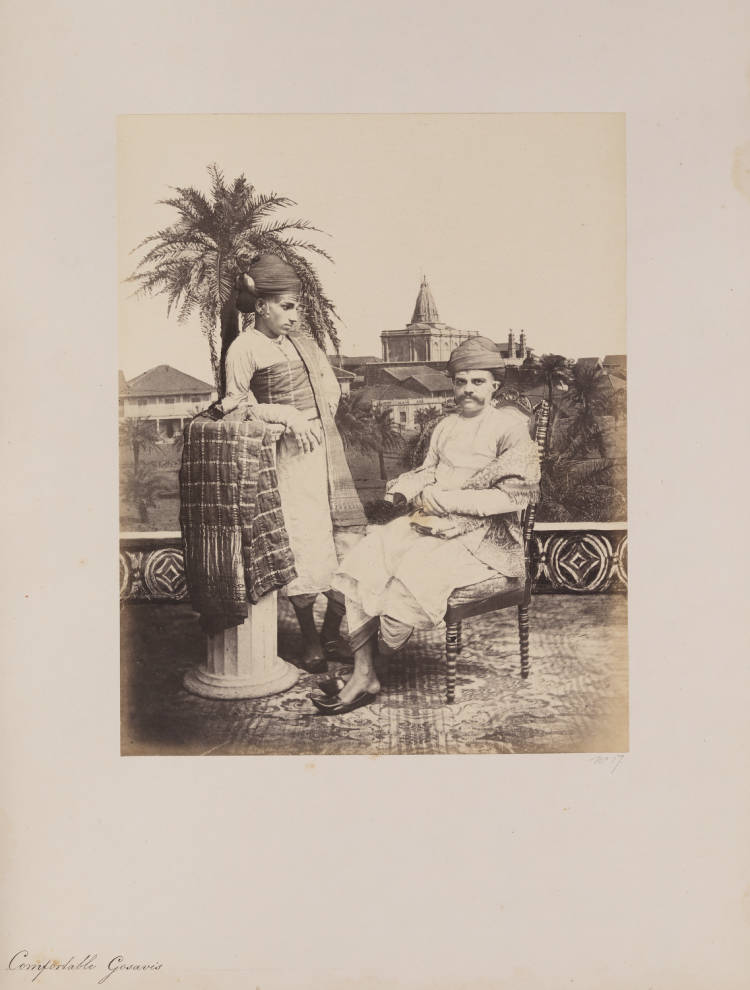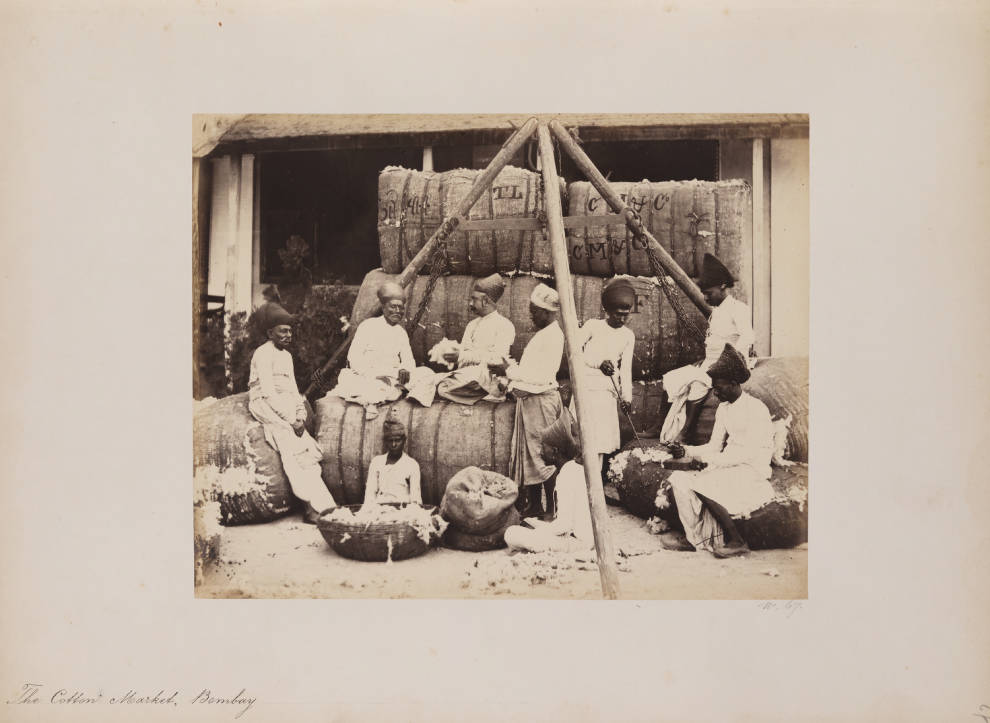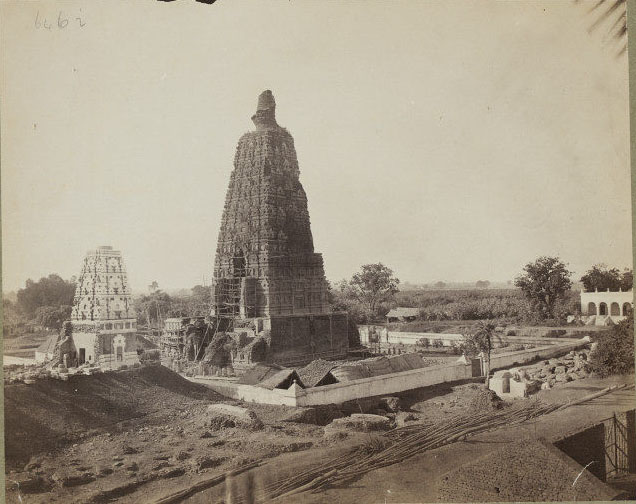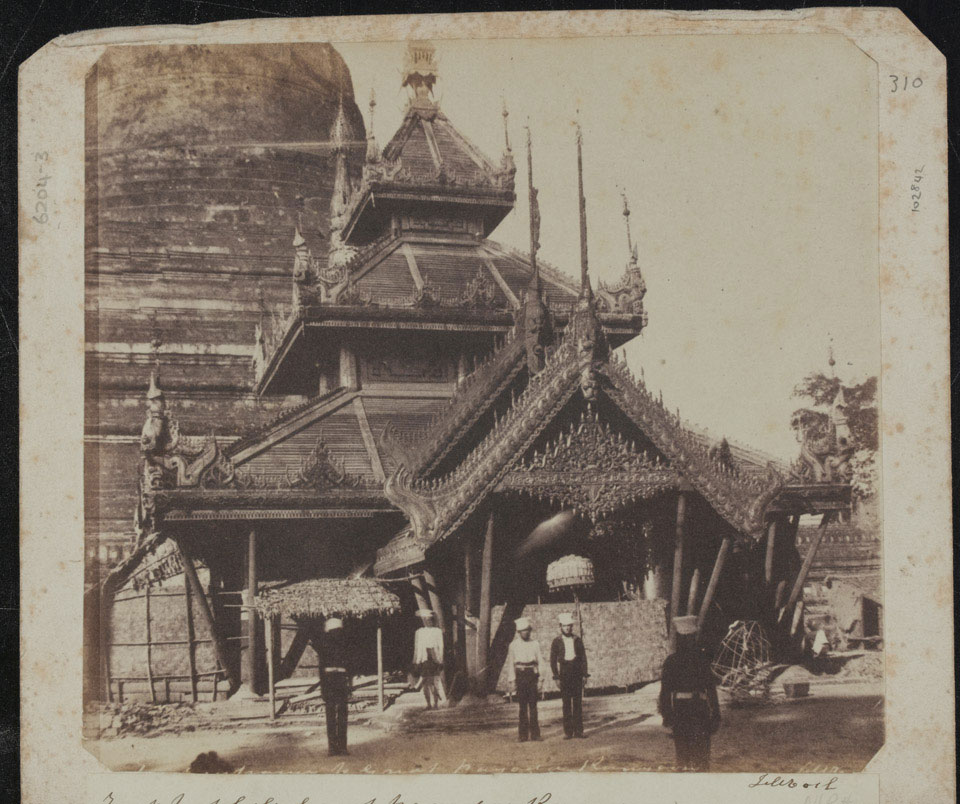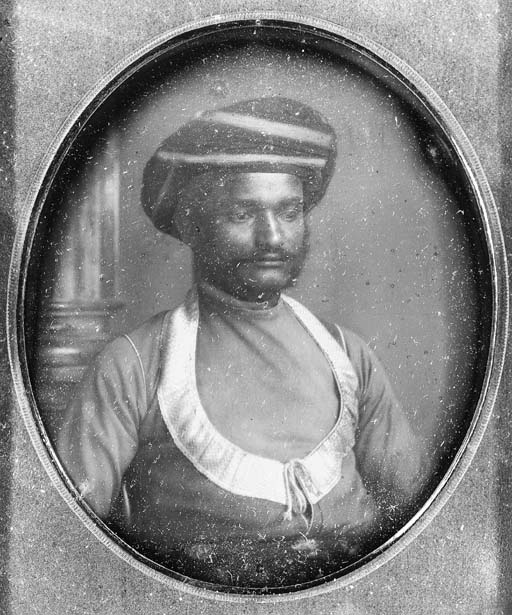William J. Johnson (1820 to ?), arrived in Mumbai (Bombay) in the 1840s and served as clerk in the Bombay Civil Service from 1848 to 1861. He was an enthusiastic photographer who started his photographic career as a daguerreotypist in Bombay, India. He established and ran a Daguerreotype studio at Grant Road from 1852-1854. Under the influence of William Henderson he adopted the Wet Plate Collodion process as daguerreotypes became obsolete only until 1860. He made Salted paper prints and albumen prints from Wet Plate Collodion negatives.
In 1854 William J. Johnson was a founding member and secretary of the Bombay Photographic Society and editor of its journal. Governor, Lord Elphinstone was the patron of the Society. Within four months, the Society had 100 members, led by Captain Harry Barr as President and with early members including Dr. Bhau Dajee, Narayen Dajee, Ardaseer Cursetjee and East India Company’s Bombay Civil Servants. Membership doubled to 200 by June 1856. In 1856, the Bombay Photographic Society published the Indian Amateur’s Photographic Album, of which Johnson became one of the main contributors.
For a brief period, William J. Johnson partnered with William Henderson. Both jointly published “The Indian Amateur’s Photographic Album” under the Patronage of the Bombay Photographic Society. The publication ran for 36 issues between 1856 to 1858, each issue containing three original albumen prints.
The individual photographs, taken by Johnson and illustrated in “Photographs of Western India” served as visual indications of culture and landscape of Western India in 19th Century. The photographs of William J. Johnson consist of panoramic views of cities and towns, temples, churches, boats, ships, harbours, rivers, railroads, palace ruins, caves, forts and ethnic diversity of India.
Photographs of Western India are divided into 3 volumes, one “Photograph of Western India, Volume I: Costumes and Characters”, and two “Photographs of Western India, Volume II: Scenery”. Large three-volume red leather-bound set with gold embossed lettering entitled; Photographs of Western India holds 290 albumen prints in total.
On his return to England he published “The Oriental Races and Tribes, Residents and Visitors of Bombay (2 Vols, London, 1863 – 1865)” which was the earliest ethnographical work published in India to include photographs.
During 1860-1885, the Albumen prints became an exclusive use as the general-purpose printing paper of photography. A large industry grew up to supply the enormous demand for the product. Although commercially prepared albumen paper was available before 1855, most photographers albumenized their own paper until the mid-1860s. After that time the usual practice was for photographers to purchase factory coated paper, although this still required sensitization by the user immediately before printing. The pre-sensitized paper came on the market in 1872 and became very popular with amateur photographers in the 1880’s and 1890’s. Professional photographers continued to sensitize their own paper because of the lower costs involved.
The three volumes of “Photographs of Western India” belonged to Sir Henry Bartle Edward Frere, Governor of Mumbai 1862-1867, commonly called Sir Bartle Frere. “The Oriental races and tribes, residents and visitors of Bombay” is preserved in National Gallery of Australia.

Reference
Govind Narayan’s Mumbai: An Urban Biography from 1863, By Govinda Nārāyaṇa Māḍagã̄vakara, Anthem Press
Journal of the Photographic Society of Bombay,January 1855
https://legacy.lib.utexas.edu/taro/smu/00237/smu-00237.html
https://cool.culturalheritage.org/albumen/library/c20/reilly1980.html
http://www.luminous-lint.com/





